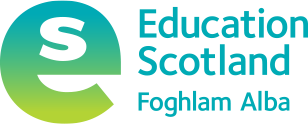Self-evaluation framework for Initial Teacher Education
How to use this self-evaluation approach to improve practice
This framework provides a structure for self-evaluation, which universities can use to identify what is working well and what needs to be enhanced and/or improved. It is designed to support collaborative evaluation with partners who contribute to the student initial teacher education experience. It is also designed to be used alongside existing quality assurance processes and the General Teaching Council for Scotland (GTCS) Standard for Provision Registration. It is based on three key areas:
- Area 1: Leadership and enhancement
- Area 2: Student experience
- Area 3: Outcomes for students
Each area is underpinned by the following themes:
Area 1: Leadership and enhancement
- Quality Assurance processes in Higher Education
- Leadership for enhancement
- Evaluation leading to enhancement
- Student contribution to enhancement
Area 2: Student experience
- Values and Professional Commitment
- Student experience of curriculum
- Student experience of academic and pastoral support
- Student experience of partnerships
- Student knowledge and understanding of safeguarding, wellbeing, equality and inclusion.
Area 3: Outcomes for students
- Meeting the requirements of professional standards
- Developing effective pedagogy
- Commitment to career-long professional learning
Within each of these areas, illustrations are provided which highlight existing quality assurance measures and outline effective practice. The Framework can be used in a range of ways to support ITE provision. It is not always necessary to use the entire framework or a complete key area for effective self-evaluation. Appendix 1 gives an illustration of how the framework can use a particular set of questions as a focus for gathering and discussing evidence, which can help to identify and share effective practice.
